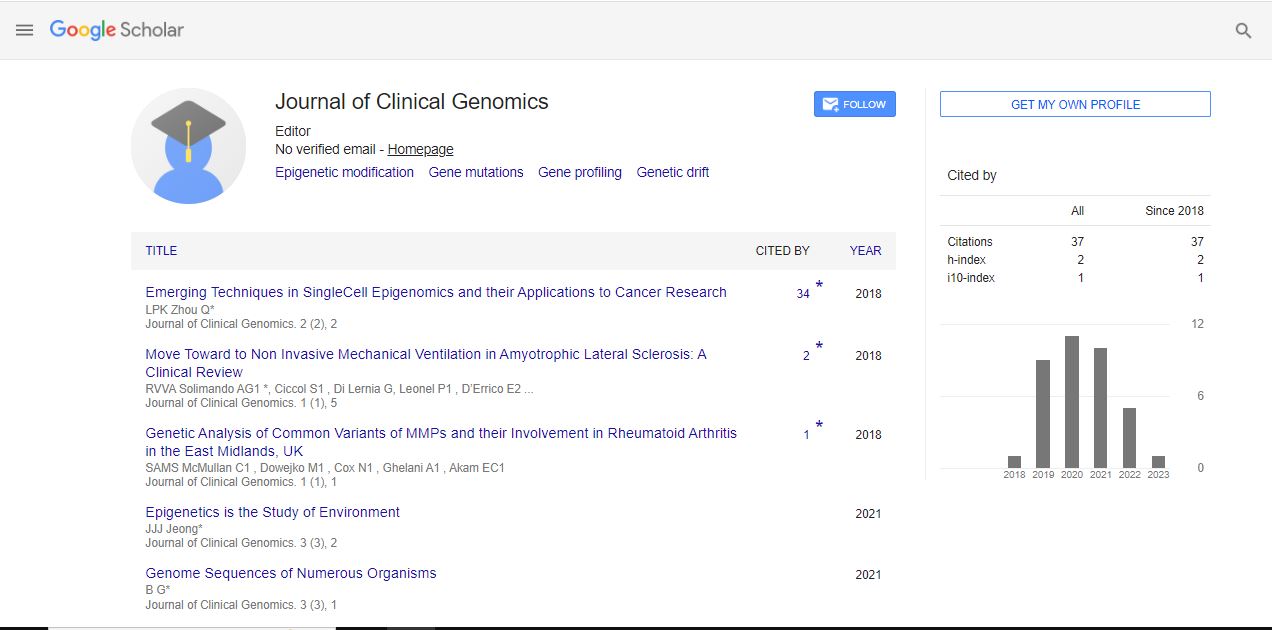Perspective, J Chromatography Res Vol: 6 Issue: 2
Advancements in Liquid Chromatography and its Principles
David Wenger*
1Department of Bio-Chemistry, University of Texas at Southwestern, Texas, USA
*Corresponding Author: David Wenger,
Department of Bio-Chemistry, University
of Texas at Southwestern, Texas, USA
E-mail: ronaldo.c@gmail.com
Received date: 02 June, 2023, Manuscript No. JCGR-23-107552;
Editor assigned date: 05 June, 2023, PreQC No. JCGR-23-107552 (PQ);
Reviewed date: 19 June, 2023, QC No. JCGR-23-107552;
Revised date: 26 June, 2023, Manuscript No. JCGR-23-107552 (R);
Published date: 06 July, 2023, DOI: 10.4172/JCGR.1000057.
Citation: Wenger D (2023) Advancements in Liquid Chromatography and its Principles. J Chromatography Res 6:2.
Description
Liquid Chromatography (LC) is a strong and widely used analytical technique in the field of chemistry. It has revolutionized the way studies and analysts separate, identify, and quantify components in complicated manner. Similarly other chromatographic methods, liquid chromatography utilize a liquid mobile phase to carry the sample through a stationary phase, facilitating efficient and high-resolution separations. With its versatility, sensitivity, and wide range of applications, liquid chromatography has become an indispensable equipment in various scientific disciplines, including pharmaceuticals, environmental analysis, biochemistry, and analysis of food.
Principles of liquid chromatography
Liquid chromatography operates on the same fundamental principles as other chromatographic techniques, focusing on the differential migration of components in a combination. The process involves a mobile phase, which is a liquid solvent, and a stationary phase, typically compressed into an individual section. When the sample is introduced into the liquid chromatography system, it is accompanied through on the column by the mobile phase. As the sample components interact differently with the stationary phase, they separate, resulting in different chromatogram regions.
Types of liquid chromatography
High-performance liquid chromatography: High-Performance Liquid Chromatography (HPLC) is the most common and versatile form of liquid chromatography. It employs high-pressure circulates to push the liquid mobile phase through the moved into a structure with a stationary phase, frequently consisting of small particles for increased surface area and effectively separation. HPLC is appropriate for analyzing a wide range of samples, from small molecules, such as drugs and metabolites, to large biomolecules, such as proteins and nucleic acids.
Reverse-phase liquid chromatography: RP-Reverse-Phase Liquid Chromatography (RP-LC) is a popular mode of HPLC that utilizes a nonpolar stationary phase and a polar mobile phase. Nonpolar analyses interact more strongly with the nonpolar stationary phase, leading to longer retention times and improved separation. This technique is widely used in pharmaceutical and biological research to analyze hydrophobic compounds and lipids.
Ion-exchange chromatography: Ion-Exchange Chromatography (IEC) separates analytes based on their charge differences. The stationary phase is typically a material with charged functional groups that attract and retain oppositely charged analytes. By adjusting the pH or ionic strength of the mobile phase, scientists can control the interactions between the analytes and the stationary phase, leading to precise separations.
Size exclusion chromatography or gel filtration: Size Exclusion Chromatography (SEC) separates analytes based on their size or molecular weight. In this technique, the stationary phase consists of porous beads that allow smaller molecules to enter the pores, leading to a longer retention time, while larger molecules pass through the column more quickly. SEC is commonly used for separating proteins and determining their molecular weight.
Recent advancements in liquid chromatography
Ultra-high-performance liquid chromatography: Ultra-High- Performance Liquid Chromatography (UHPLC) is an advancement of HPLC that uses columns with even smaller particle sizes and operates at higher pressures. These improvements result in easier separations and higher resolution, enhancing the efficiency and sensitivity of liquid chromatography analyses.
Mass spectrometry coupling: The coupling of liquid chromatography with mass spectrometry has revolutionized analytical capabilities. Mass Spectrometry Coupling (LC-MS) allows for both separation and identification of analytes in complicated combinations providing more comprehensive information about the sample composition.
Two-dimensional liquid chromatography: Two-Dimensional Liquid Chromatography (2D-LC) combines two separation mechanisms to accomplish enhanced resolution and maximum capacity. This technique is particularly useful for complex samples, enabling scientists to resolve closely eluting compounds that might be challenging to separate with traditional chromatography.
Automated systems: Automation has become increasingly prevalent in liquid chromatography, streamlining the sample preparation, injection, and data analysis processes. Automated systems enhance productivity, reduce human error, and enable high-throughput analysis in various industries.
 Spanish
Spanish  Chinese
Chinese  Russian
Russian  German
German  French
French  Japanese
Japanese  Portuguese
Portuguese  Hindi
Hindi 